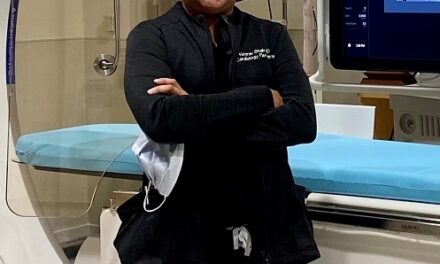Where are we going? In what direction are we heading? Our current healthcare system resembles a random aggregation of healthcare delivery entities trying to meet the healthcare needs of an aging and diverse population. Healthcare professionals work in a virtual vacuum, rendering healthcare services often in the absence of essential and critical data.
We are still outspending the world in healthcare expenditures as a share of the GDP (~13%) projected to increase to 16% in 2010 and have the highest per capita expenditures ($5,757) to increase to $9,216 by 2010. Medicaid and Medicare expenditures will consume almost onethird of the state and federal budgets, but the number of uninsured Americans continues to increase steadily surpassing 44 Million. According to the Washington, D.C.-based Henry J. Kaiser Family Foundation, the cost of providing health care for U.S. citizens who have no insurance will total $125 billion this year. Meanwhile, politicians either offer band-aid fixes to keep the ailing healthcare infrastructure alive or write blank checks for new entitlement programs (Medicare Part D) thereby hastening the inevitable bankruptcy of the system. We still pride ourselves to have the best healthcare system in the world, but we are fooling ourselves! Our primary healthcare delivery system is crumbling. We rank 28th in the world in regards to infant mortality. We are unable to deliver basic vaccinations and millions of children have unmet healthcare needs. Health insurance premiums already are almost unaffordable and companies either offer no insurance or insurance with very limited benefits. Physicians reimbursement for medical services is decreasing forcing many good doctors to add more patients to their already overloaded schedule to meet their INCREASING practice expenses. Furthermore, the Medicare programs trustees have announced that physician payment rates will be cut 26% from 2006-2011including a 4.4% cut on January 1, 2006. This will force doctors to restrict their Medicare participation and further limit patient access to needed healthcare services. All of the above contributes to widespread dissatisfaction with the US health care “system”, but nobody agrees on how to fix it. In the absence of a consensus we continue to resuscitate a deeply and irreparable flawed healthcare system. Nobody is willing to sign a DNR (Do Not Resuscitate) order and anybody who dares to question the system is being demonized as either liberal or ultra-conservative. Proponents of single issue groups offer either market-based reforms or a single-payer system. Lets not jump on the bandwagon of endorsing either one of those approaches. Before we think about reform we must set priorities. Do we want to reform the health care financing system or do we want to improve the delivery and organization of care? The answer is clear: without major changes in healthcare financing, we CANNOT improve the delivery and organization of care. How can we approach this problem? Again, a national consensus is needed agreeing that ALL should participate in financing the healthcare system in order to achieve universal coverage. This would require that every American has health insurance that meets some minimum requirements and standards. In addition, municipal, state and federal agencies (i.e. the government) need to provide income based subsidies or tax credits to enable the poor to purchase insurance on the market. Physicians and other healthcare professionals would contract individually with each patient, focusing on quality of care and customer service to retain their customer (i.e. patient) base. Medical information technology (IT) will form the virtual central nervous system of the healthcare delivery system thereby optimizing the delivery and organization of care. The implementation of modern medical information IT systems will follow national standards enabling horizontal (ex. from physician to physician) and vertical (ex. from lab to hospital to physician) data exchange. Private-public entities should provide grant and interest-free loans to finance the implementation of a medical information technology infrastructure. The training and education of medical students and physicians should focus on cost-effective and evidence-based health care delivery emphasizing preventive healthcare services. Physicians need to learn to act as change agents instead of focusing on maintaining their status-quo. Most of us prefer the “devil we know” to the one we dont know. Nevertheless, we must have the courage and willingness to change our ailing healthcare delivery “system”. Time is running out and we should not wait for a predictable crisis forcing us to accept ad-hoc solutions.Related Posts
Recent Posts
-

-
 NIH RECOVER makes long COVID data easier to accessApr 25, 2024 | SF STAT!
NIH RECOVER makes long COVID data easier to accessApr 25, 2024 | SF STAT! -

-

-






















